
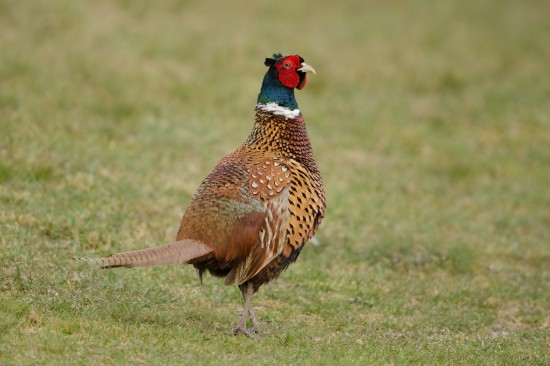
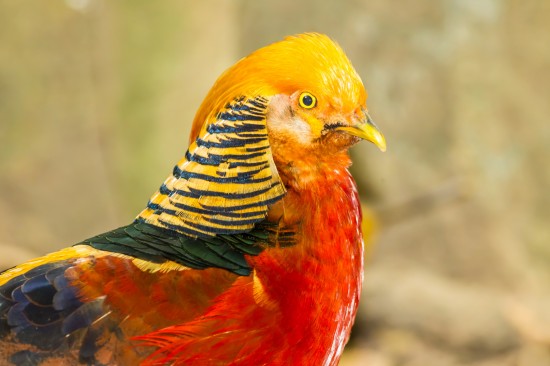
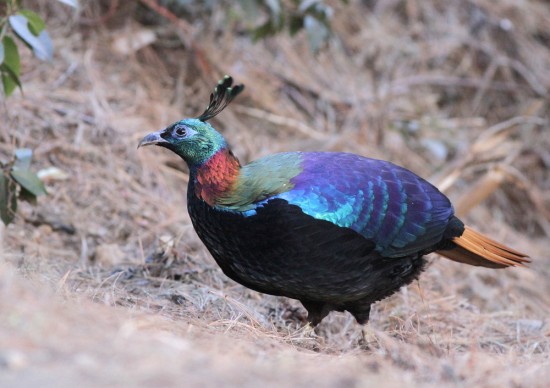
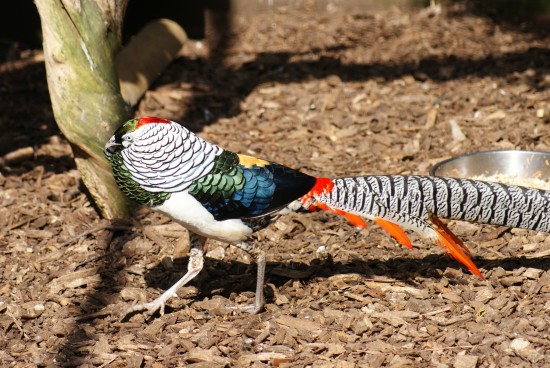
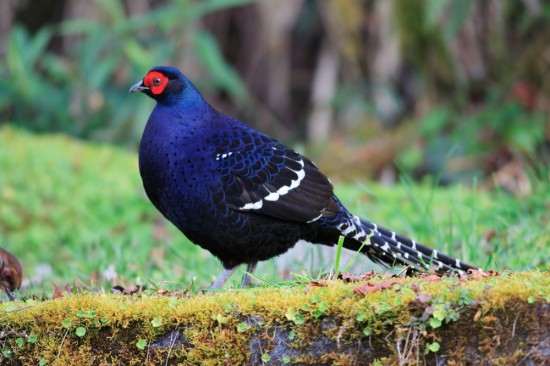
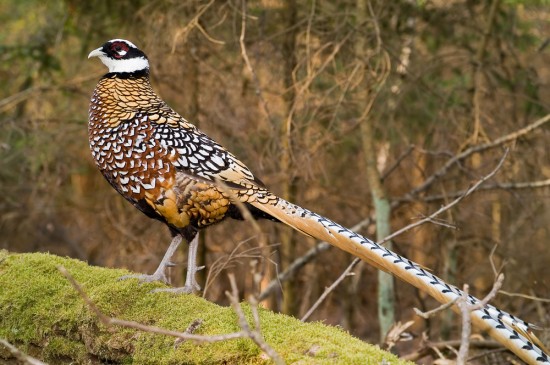
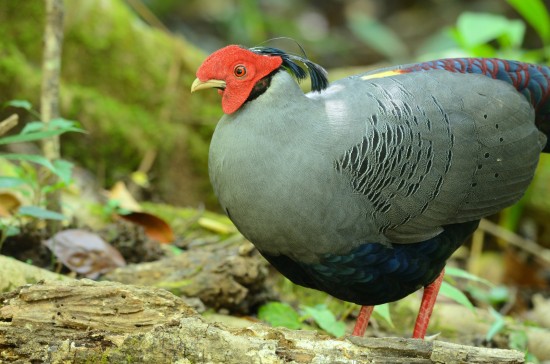
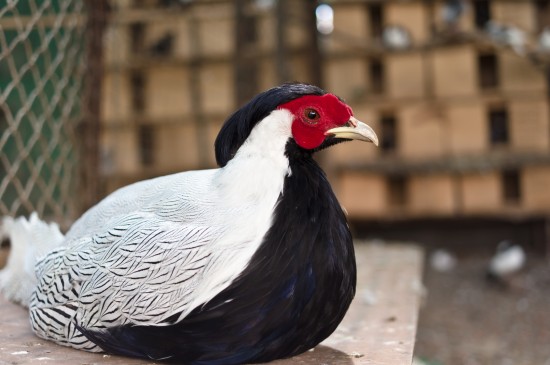
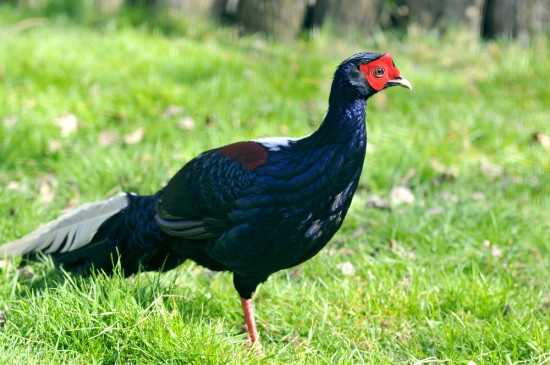
Pheasants are an extremely hardy bird that would be a wonderful addition to any aviary. With species coming from across the world, there are a number who have been imported and now thrive in the UK. Consider before you buy your first breeding pair or trio which breed is right for you – do you have the space? Does it matter if they have loud calls? Can you provide the right diet?
This is an overview of ten of the more popular breeds kept in the UK.
This is the most popular pheasant, and one you will see in the wild across the UK. It is used mainly as a game bird, but is a good aviary bird. Males have a golden brown plumage, with blue-black necks. They tend to be a fast bird when scared, opting to run rather than fly. If you plan to keep them, make sure your aviary is secure. Wild pheasants will come during mating season, and both hens and cocks are likely to escape to join their feral brethren. Although they eat grain and insects like other pheasants, they have also been known to attack and eat mice, snakes and small birds.
The males of this breed have a distinctive plumage – with a golden crest, yellow and black neck, and scarlet chest. They were originally native to the forests of China, but can now be found in many aviaries across the UK. They are one of the easiest breeds of pheasants to keep, being very hardy and easy to feed. Ideally they should be kept in a trio – one cock and two hens. They are a very fertile breed and will lay between 5-11 eggs at one time.
Despite its squat body and short tail, this is one of the most beautiful pheasants and very reminiscent of the peacock. With a shimmering metallic green head, red metallic neck, and blue metallic wings, it is like a jewel in the aviary. You will need a fairly large enclosure, as this bird is designed to dig. With a massive curved beak, it digs through the ground to find roots and grubs. They are used to colder weather, and will need cool shelter in the summer months. They are known as one of the friendlier species.
Taking their name from the first person who imported the breed to England – Sarah Countess Amherst – they are related to the Golden Pheasant, also coming from China. Although some feral populations are still in Bedfordshire, they are now kept as exotic birds. They are very hardy, so extremely easy to keep and ideal for beginners. Although they will feed on grain and insects on the ground, they will naturally roost in trees. Their plumage makes it easy for them to camouflage. The females are mottled brown, with the males having black and white necks, metallic green necks and long tail feathers. The males also have a bright red crest.
A member of the long-tailed species, this bird has a black plumage with a sheen similar to oil in sunlight. Unlike many pheasants, this bird can only fly short distances. When scared, they will usually find a place to hide instead of panicking. Their natural habitat is in the forests and bamboo fields of Taiwan. As a result, they like to live amongst shrubbery. They will eat this as well, so make sure you are planting new shrubs regularly. Mikado’s also love to devour bugs, including snails, so can help gardeners get rid of pests. As one of the quieter birds, they are perfect for people who have neighbours that live close by.
Having the longest tail of any bird, the Reeves Pheasant will need a large pen despite its small stature to ensure the tail feathers aren’t broken accidentally. Originally cultivated as a breed for shooting, they are now a threatened breed in the wild due to over hunting. There golden brown plumage is tipped off with the extremely long silver tail feathers. Unlike many species of pheasant, they are extremely aggressive towards humans. As a result it is advised to get them as chicks to help tame them. There are not fussy eaters, and do not need any specialist diet. They are also fairly quiet birds.
For an owner who wants a lively and demonstrative bird, these are perfect. The hens are one of the most attractive in the pheasant family, and the males make sure their mating ritual is loud and extremely demonstrative. The cocks have light grey plumage, with an iridescent golden back that glitters in sunlight. Both males and females have a large, red waddle around their eyes. These birds require heated shelter in the winter, as they are not used to old weather. Additional heating should be provided, and perches as they prefer to roost up high. The eggs are usually rosy in colour. Being the national bird of Thailand, their diet is a mixture of berries and insects.
These birds are great for beginners, as they are easy to manage and beautiful to look at. With a black chest, and pure white body, the males also have a distinctive red waddle around their eyes and beak. They will build nests by creating a hollow in the ground, so need their aviary to be based on well-irrigated soil. As well as grain, they also eat insects such as worms and crickets. They have been used to create a number of subspecies, such as the Imperial Pheasant.
Despite being from Taiwan, this breed does extremely well in the UK. The males are extremely interesting to keep as during breeding season they perform an unusual mating dance. The birds are also very attractive, with blue-black feathers all over their body, and iridescent green-black wings. Their chicks are very gentle, so can be bullied by other breeds, but are easy to tame. Unlike some other species, they do not eat a lot of greenery, so you must provide a varied diet of grain and nuts. They tend to mature at two years old, but when ready to lay can produce batches of 4-8 eggs.
So named for the white tufts on their heads, these pheasants are mainly white with long, grey tinged tail feathers. Originally coming from the snowy Himalayan mountains, they are incredibly hardy. They have very strong beaks, as they are used to digging up roots and grubs. It is considered a vulnerable breed, as their habitat is disappearing and have been over hunted. Breeders are now keeping bloodlines pure and limiting cross breeding.
 How To Deal With A Strange Dog Wandering Onto Your Property
How To Deal With A Strange Dog Wandering Onto Your Property
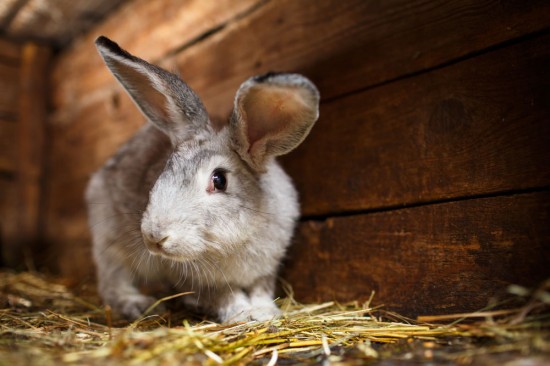 A Hutch Is Not Enough - Why Rabbits Should Not Be Considered As An Easy Pet
A Hutch Is Not Enough - Why Rabbits Should Not Be Considered As An Easy Pet
 The Role That Water Plays In Canine Nutrition
The Role That Water Plays In Canine Nutrition
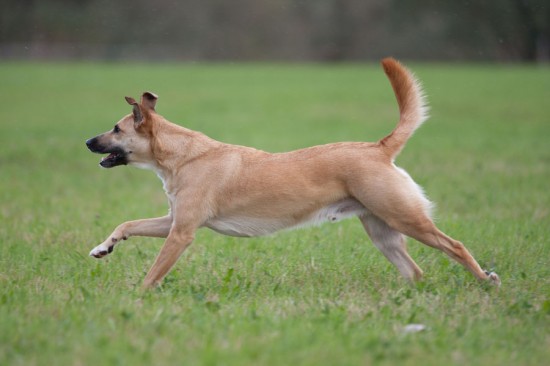 How To Manage Chasing And Poor Recall In Your Dog
How To Manage Chasing And Poor Recall In Your Dog
 Dogs And House Soiling
Dogs And House Soiling
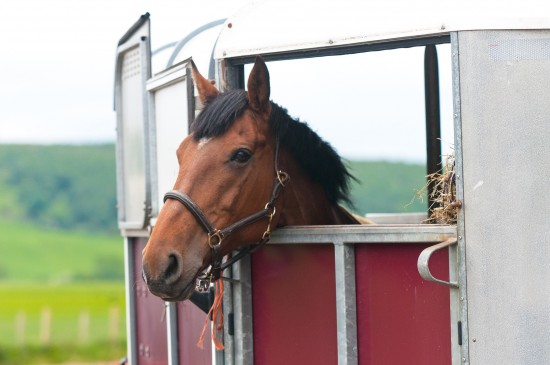 The Importance Of Insuring Saddlery & Trailers
The Importance Of Insuring Saddlery & Trailers
 Is It A Veterinary Emergency?
Is It A Veterinar
Is It A Veterinary Emergency?
Is It A Veterinar
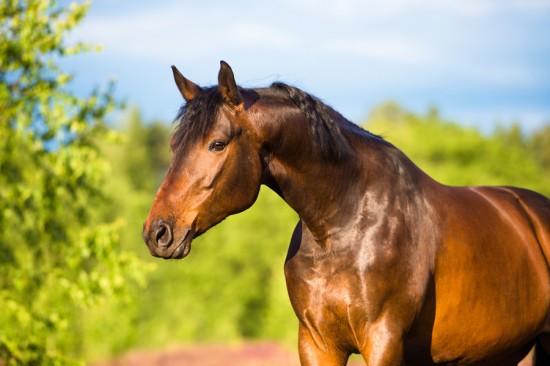 Clicker Training For Horses - How Well Does It Work?
Clicker Training
Clicker Training For Horses - How Well Does It Work?
Clicker Training
 Top Vets for your lovely pets in Coquitlam
Top Vets for your lovely pets in Coquitlam
Pet
Top Vets for your lovely pets in Coquitlam
Top Vets for your lovely pets in Coquitlam
Pet
 How To Handle Your New Puppy’s First Night With You
How To Handle You
How To Handle Your New Puppy’s First Night With You
How To Handle You
 Rehoming Your Pet
Rehoming Your Pet
Rehoming Your Pet
Rehoming Your Pet
Copyright © 2005-2016 Pet Information All Rights Reserved
Contact us: www162date@outlook.com